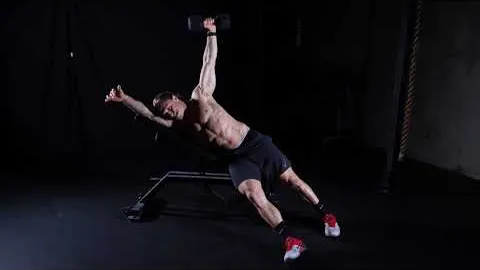

When it comes to strength training, there are countless exercises to choose from. One exercise that often flies under the radar but should not be overlooked is the Powell Raise. The Powell Raise is an effective shoulder and upper back exercise that can be performed with dumbbells or resistance bands. In this guide, we will delve into the benefits, proper form, variations, and tips for maximizing the effectiveness of the Powell Raise exercise.
The Powell Raise exercise targets the muscles of the shoulders and upper back, including the deltoids, rhomboids, and trapezius. By incorporating this exercise into your routine, you can enjoy several benefits:
Increased shoulder strength: The Powell Raise specifically targets the shoulder muscles, helping to strengthen and stabilize this crucial joint.
Improved posture: Since the Powell Raise targets the upper back muscles, regular practice can help improve posture and reduce the risk of slouching.
Enhanced stability: By engaging the stabilizer muscles in the upper back and shoulders, the Powell Raise helps improve overall stability and balance.
Injury prevention: Strengthening the shoulder and upper back muscles can help prevent injuries, such as rotator cuff tears and shoulder impingement.
To get the most out of the Powell Raise exercise and prevent injury, it is important to maintain proper form. Here's a step-by-step guide on how to perform the exercise correctly:
Starting position: Stand with your feet shoulder-width apart and hold a dumbbell in each hand. Alternatively, use resistance bands anchored at waist height.
Grip: Hold the dumbbells or resistance bands with an overhand grip, palms facing your body.
Shoulder position: Keep your shoulders relaxed and down, away from your ears.
Movement: Raise your arms out to the sides while keeping a slight bend in your elbows. Avoid using momentum or excessively swinging the weights.
Range of motion: Lift your arms until they are parallel to the ground, or as high as you comfortably can.
Controlled descent: Slowly lower the weights back to the starting position, maintaining control throughout the movement.
While the basic Powell Raise exercise is effective on its own, incorporating variations can target different muscles or add complexity to your routine. Here are a few variations to consider:
Front Raise: Instead of raising your arms to the sides, lift them directly in front of you, while maintaining the same posture and grip.
Seated Powell Raise: Perform the exercise while seated on a bench or stability ball to engage your core and challenge your balance.
Single-arm Powell Raise: Perform the exercise with one arm at a time to isolate and strengthen each shoulder individually.
Inverted Powell Raise: Lie face-down on an incline bench with your arms hanging straight down. Lift the weights out to the sides, targeting the rear deltoids.
To ensure you get the most out of the Powell Raise exercise, follow these additional tips:
Start with light weights: Since the Powell Raise targets smaller shoulder muscles, it is important to start with lighter weights and gradually increase the load as you become stronger.
Focus on the mind-muscle connection: Concentrate on engaging the target muscles throughout the movement to maximize their activation.
Maintain proper posture: Avoid arching your back or shrugging your shoulders during the exercise. Keep your spine neutral and your core engaged.
Breathe properly: Inhale as you lower the weights and exhale as you raise them. This helps stabilize your core and maintain control.
Warm-up and cool-down: Prior to performing the Powell Raise exercise, warm up your shoulders and upper back with dynamic stretches and light exercises. After completing the exercise, cool down with static stretches to promote flexibility and reduce muscle soreness.
In conclusion, the Powell Raise exercise is a highly effective exercise for targeting the shoulders and upper back muscles. By incorporating this exercise into your strength training routine and following the proper form, variations, and tips mentioned in this guide, you can optimize your workout and enjoy the numerous benefits it offers. Start with light weights, focus on form, and gradually increase the intensity over time. Get ready to elevate your shoulder and upper back strength with the Powell Raise exercise!
If you're looking for a gym, fitness club or yoga studio, you've come to the right place.
You can find information about gyms in your area. Browse catalog of gyms and find gyms with classes which are you looking for.
On gym page you can find simple information like address, phone or website. You can find list of available classes. You can check availability of personal training or small group classes. On place page you can also see information about open hours.
You can find gyms near you with amenities, courts, studios and equipments.
Use our map to find gym at your city or district.
In Gym Navigator you can find list of exercises with movies for many body parts.
You can browse exercises catalog and find exercises the best of you.
You can also find exercises grouped into workout plans, which you can use to improve you body. Each routine show you exercises one by one and give you possibility to count you progress and count down rest time.